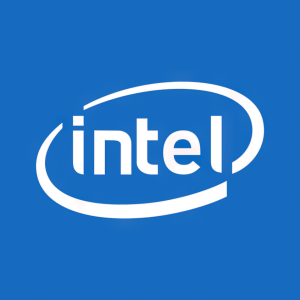Intel and Biden-Harris Administration Announce Preliminary Terms for up to $8.5 Billion in Direct Funding Under CHIPS and Science Act
Proposed funding, coupled with an investment tax credit and eligibility for CHIPS Act loans, would help Intel advance American semiconductor manufacturing and technology leadership in the AI era.
NEWS HIGHLIGHTS
-
U.S. Department of Commerce has proposed up to$8.5 billion Arizona ,New Mexico ,Ohio andOregon . -
Intel also expects to benefit from a
U.S. Treasury Department Investment Tax Credit (ITC) of up to25% on more than$100 billion $11 billion -
Proposed funding supports Intel’s previously announced plans to invest more than
$100 billion U.S. over five years to expandU.S. chipmaking capacity and capabilities critical to economic and national security and acceleration of emerging technologies, such as AI. - Intel’s investments are expected to create more than 10,000 company jobs and nearly 20,000 construction jobs, and to support more than 50,000 indirect jobs with suppliers and supporting industries.

Accompanied by construction crews on Oct. 12, 2023, Intel CEO Pat Gelsinger tours the company's two new fabrication plants being built in
CHIPS Act funding aims to increase
“Today is a defining moment for the
Press Kit:
Together, the CHIPS Act proposed funding and Intel’s previously announced plans to invest more than
Today’s announcement demonstrates the
“There is no one who cares more about revitalizing American manufacturing than President Biden, and today’s announcement is a massive step towards ensuring America’s leadership in manufacturing for the 21st century. With this agreement, we are helping to incentivize over
Under the PMT, Intel would also have the option to draw upon federal loans of up to
Technology Leadership
Intel's strategy is centered on three core elements – establishing process technology leadership, building a more resilient and sustainable global semiconductor supply chain, and creating a world-class foundry business – all of which align with the objectives of the CHIPS Act to promote semiconductor manufacturing and technology leadership in
In addition to its significant investments to expand
Systems Foundry for the AI Era
Intel Foundry brings together Intel’s Technology Development, Global Manufacturing and Supply Chain, and foundry customer service and ecosystem operations, enabling all the critical components customers need to design and manufacture chips for a new era of AI-driven computing. As the world’s first systems foundry for the AI era, Intel Foundry offers full-stack optimization from the factory network to software, and enables customer readiness for Intel process and packaging designs with broad intellectual property and electronic design automation support from ecosystem partners.
Intel is dedicated to advancing
-
Arizona : Intel’sU.S. Manufacturing Powerhouse (Silicon Desert fact sheet) -
New Mexico : Intel’sU.S. Advanced Packaging (SiliconMesa fact sheet) -
Ohio : Intel’s New Leading-Edge Manufacturing Site (Silicon Heartland fact sheet) -
Oregon : The Heart of Intel’s Semiconductor R&D (Silicon Forest fact sheet)
Intel was founded in the
Semiconductor Talent and Sustainable Manufacturing
To meet the growing demand for future semiconductor talent, Intel is driving innovative partnerships with government and academia to create a robust and diverse ecosystem of skilled semiconductor talent critical to the success of the entire semiconductor industry and the
Intel recognizes that resilient supply chains must also be sustainable, and the company is committed to becoming the industry’s most sustainable semiconductor foundry. Intel currently uses
More: Intel CEO Pat Gelsinger leads an event to celebrate Intel’s CHIPS and Science Act direct funding announcement at 10:15 a.m. PDT today. View a livestream on the Intel Newsroom.
Forward-Looking Statements
This release contains forward-looking statements, including with respect to Intel’s:
- expected benefits under the CHIPS and Science Act, including with respect to direct funding and loans;
- expectations as to ITC benefits and the qualification of Intel’s investments for the ITC;
- business plans and strategy and anticipated benefits therefrom;
- future products, services, and technologies and expectations regarding product and process leadership;
- investment plans and impacts of investment plans, including manufacturing capacity expansion plans and additional jobs expected to be created;
- plans and goals related to Intel Foundry;
- AI strategy and capabilities;
- future social and environmental performance goals, measures, strategies, and results; and
- other characterizations of future events or circumstances.
Such statements involve many risks and uncertainties that could cause our actual results to differ materially from those expressed or implied, including those associated with:
- the high level of competition and rapid technological change in our industry;
- the significant long-term and inherently risky investments we are making in R&D and manufacturing facilities that may not realize a favorable return;
- the complexities and uncertainties in developing and implementing new semiconductor products and manufacturing process technologies;
- our ability to time and scale our capital investments appropriately and successfully secure favorable alternative financing arrangements and government grants;
- implementing new business strategies and investing in new businesses and technologies;
- changes in demand for our products;
-
macroeconomic conditions and geopolitical tensions and conflicts, including geopolitical and trade tensions between the
U.S. andChina , the impacts ofRussia's war onUkraine , tensions and conflict affectingIsrael , and rising tensions between mainlandChina andTaiwan ; - the evolving market for products with AI capabilities;
- our complex global supply chain, including from disruptions, delays, trade tensions and conflicts, or shortages;
- product defects, errata, and other product issues, particularly as we develop next-generation products and implement next-generation manufacturing process technologies;
- potential security vulnerabilities in our products; increasing and evolving cybersecurity threats and privacy risks;
- IP risks including related litigation and regulatory proceedings;
- the need to attract, retain, and motivate key talent;
- strategic transactions and investments;
- sales-related risks, including customer concentration and the use of distributors and other third parties;
- our significantly reduced return of capital in recent years;
- our debt obligations and our ability to access sources of capital;
- complex and evolving laws and regulations across many jurisdictions;
- fluctuations in currency exchange rates;
- changes in our effective tax rate;
- catastrophic events;
- environmental, health, safety, and product regulations;
- our initiatives and new legal requirements with respect to corporate responsibility matters; and
-
other risks and uncertainties described in this release, our most recent Annual Report on Form 10-K and our other filings with the
U.S. Securities and Exchange Commission (SEC).
All information in this press release reflects Intel management views as of the date hereof unless an earlier date is specified. Intel does not undertake, and expressly disclaims any duty, to update such statements, whether as a result of new information, new developments, or otherwise, except to the extent that disclosure may be required by law.
About Intel
Intel (Nasdaq: INTC) is an industry leader, creating world-changing technology that enables global progress and enriches lives. Inspired by Moore’s Law, we continuously work to advance the design and manufacturing of semiconductors to help address our customers’ greatest challenges. By embedding intelligence in the cloud, network, edge and every kind of computing device, we unleash the potential of data to transform business and society for the better. To learn more about Intel’s innovations, go to newsroom.intel.com and intel.com.
© Intel Corporation. Intel, the Intel logo and other Intel marks are trademarks of Intel Corporation or its subsidiaries. Other names and brands may be claimed as the property of others.
View source version on businesswire.com: https://www.businesswire.com/news/home/20240319997902/en/
William Moss
1-650-521-1754
william.moss@intel.com
Source: Intel Corporation






